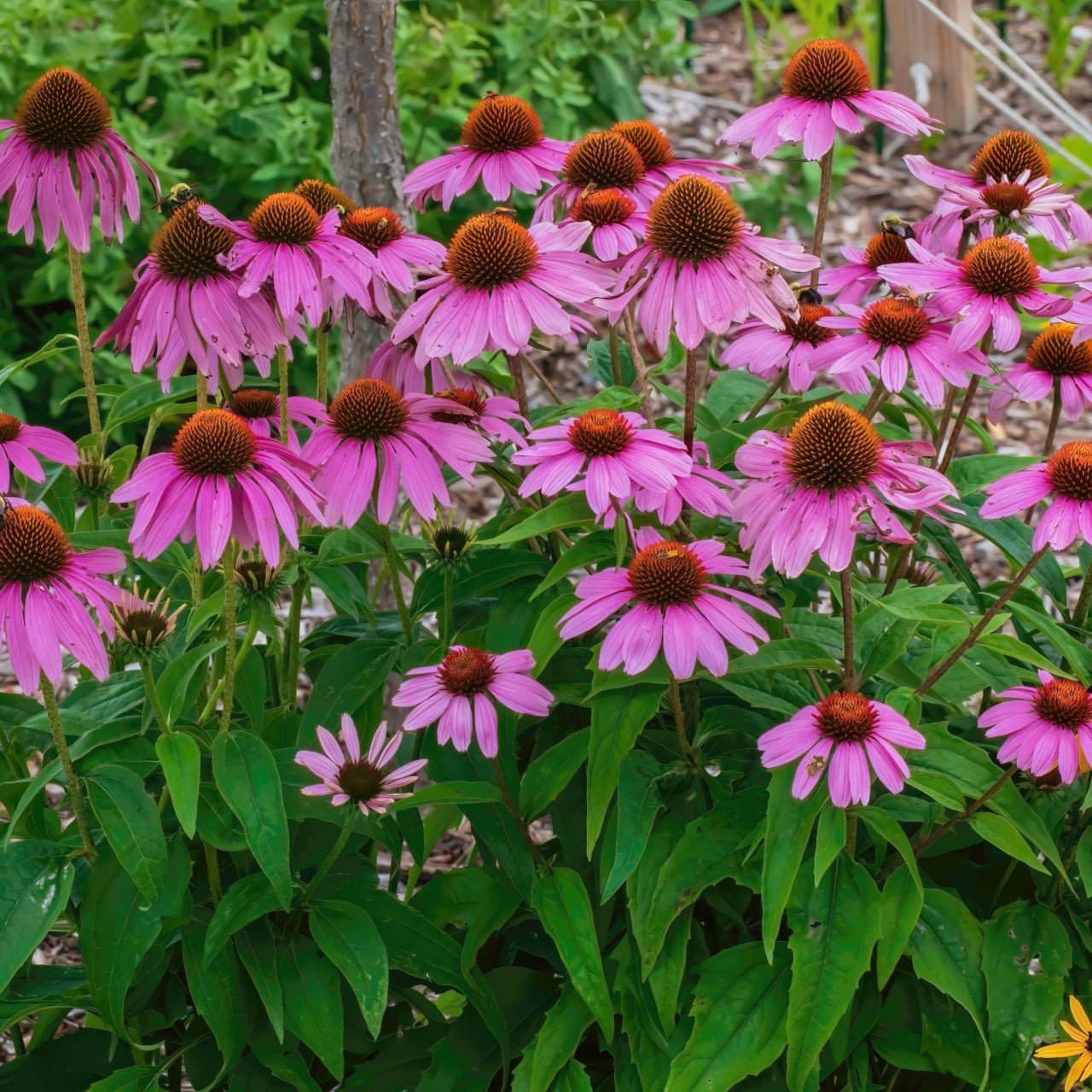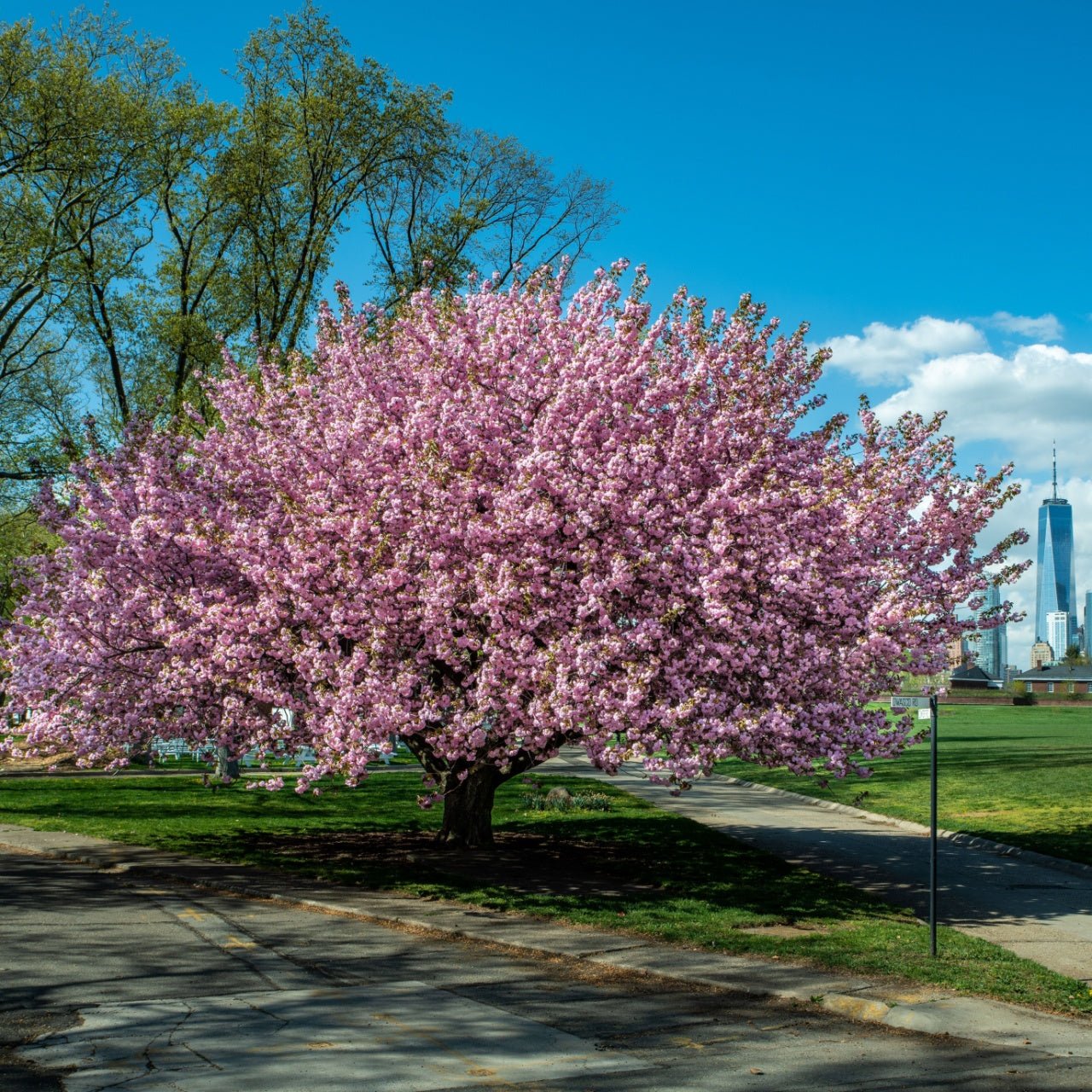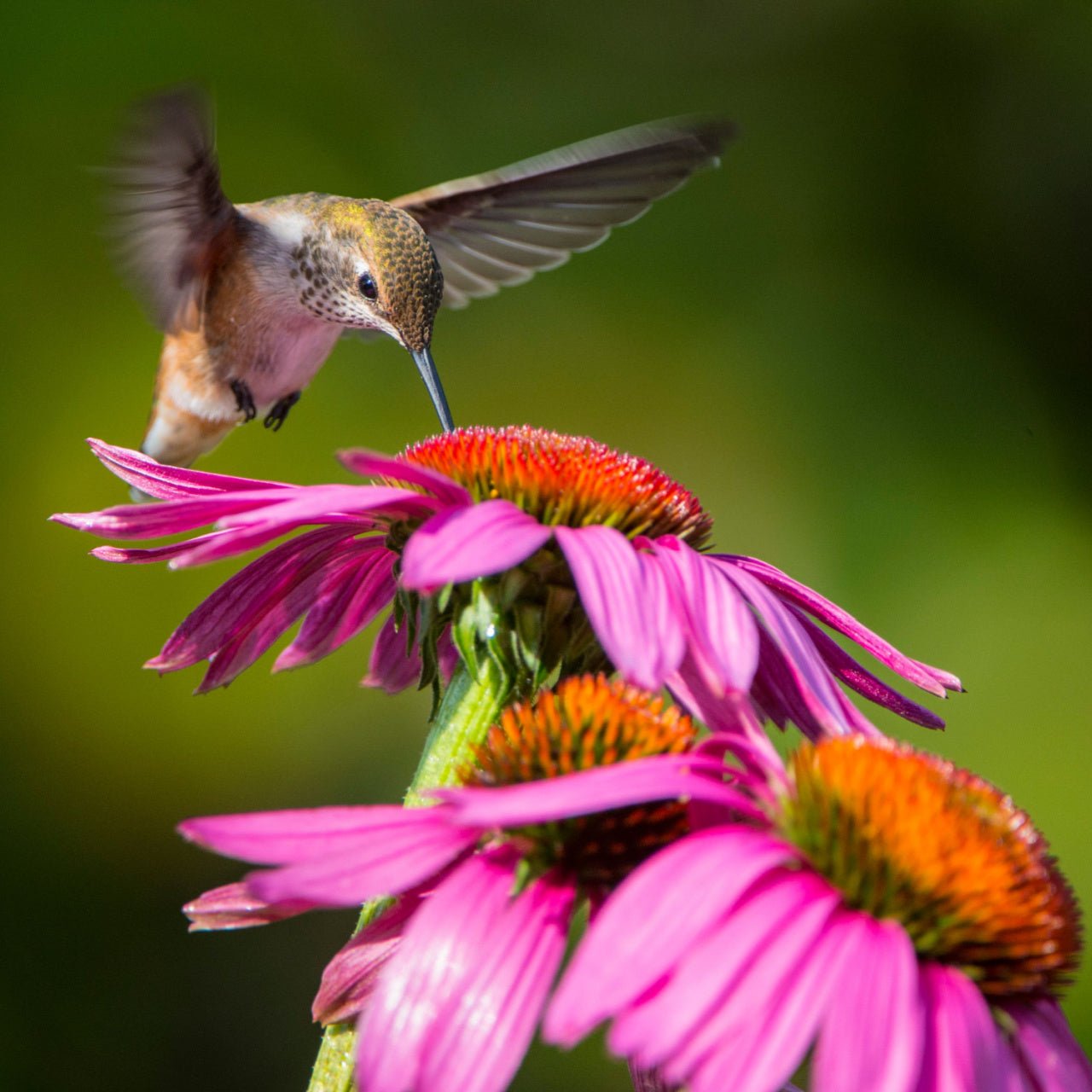



Coneflower Echinacea
Drought-tolerant and low maintenance
Enhances garden biodiversity
Ideal for cut flower arrangements
Thrives in
ZONE 3ZONE 4ZONE 5ZONE 6ZONE 7ZONE 8ZONE 9This plant ships:
May 251 Year Guarantee on all plants
Coneflower - Echinacea sp.
Coneflower (Echinacea) is a native, herbaceous perennial that is a pollinator favorite. It will become your favorite in the garden, too! Enjoy long lasting color and structure in your garden through the seasons.
Family: Asteraceae
Light Requirement: Full
Water Needs: Average
Height: 2 - 4 ft.
Spread: Slow
Growth Rate: Average
Bloom Time: Summer
Flower Color: Pink
Wildlife Value: Attracts bees, butterflies, birds
Landscape Uses and Maintenance – Coneflower (Echinacea)
The coneflower (echinacea) is a well-loved wildlife favorite and an essential for building a pollinator garden and butterfly garden. Vital for any native garden, too. Use this plant to add upright interest to borders and garden beds in any garden.
Interested in starting a cutting garden? Plant tightly to enjoy weekly gorgeous bouquets from your cut flower garden and decorate your tables with them.
For the gardener who wants to enjoy blooms without much effort, this is an ideal, very low maintenance plant. It is drought-tolerant; you do not need to worry about watering throughout the growing season unless there is a substantial drought. Water thoroughly when first planting.
This plant is tolerant of various soil types, including clay, sand, and loam. Capable of growing in rocky soil, too.
Check your garden daily to deadhead spent flowers to encourage new flowers to bloom through the fall, especially for a cut flower garden.
Leave the stems in your garden for winter interest and for wildlife to eat remaining seeds in the flowers. Eggs of moths, butterflies, and other insects will be laid in the stems in the fall and will emerge in the spring.
Noteworthy Characteristics
The coneflower (echinacea) is a true pollinator favorite that will attract many birds, butterflies, and bees to your garden. The deer will leave them alone, and so will the squirrels.
You can never have too much of this plant! It is easy to propagate. Spread seeds by hand by flipping the heads of flower upside down to scatter them where you want more to grow.
Once established, you can also dig up clumps of this plant and separate roots to increase the population in your garden!
This Is How Your Plants Will Look upon Delivery

Bloom Season
Fall
Bloom/Foliage Color
Purple
Height at Maturity
Over 12"
Care
Coneflowers are low-maintenance perennials that thrive in various soil types. They need regular watering, especially during dry spells. Deadhead spent flowers and trimmed them back in late fall to encourage continuous blooming. They are resistant to most pests and diseases.
Plant Reproduction
Coneflowers can reproduce by scattering their seeds.
Shipping date depends on the date displayed and chosen when you order from the product's page.
We only accept returns on plants verified dead. If you think your plants have died, we offer a 1 year warranty, please use this File a Claim Link to verify dead plants and start with return warranty process.






Extended Bloom Time:
Enjoy continuous color throughout the growing season with Coneflowers. Their vibrant flowers last from summer to fall, and their seed heads offer visual interest even in winter.
Wildlife Friendly:
Coneflowers attract pollinators and provide seeds that nourish birds in the winter. They contribute to a garden that supports diverse wildlife throughout the year.
Eye-Catching Colors:
Coneflower plants boast daisy-like flowers in vibrant pinks and purples, adding a burst of color to any garden. Their long-lasting blooms light up your outdoor space from summer through fall.
Garden Versatility:
Whether used in borders, beds, or containers, Coneflowers fit seamlessly into any garden design. Their adaptability makes them a versatile choice for enhancing various garden styles.
Caring Tips
How do I care for my Coneflower Echinacea?
Each box contains detailed care instructions and information about your product. But here's the basics.
Care Tips
Coneflowers are low-maintenance perennials that thrive in various soil types. They need regular watering, especially during dry spells. Deadhead spent flowers and trimmed them back in late fall to encourage continuous blooming. They are resistant to most pests and diseases.
Light Requirements
Coneflowers thrive in full sun, requiring at least 6 hours of direct sunlight daily. They can endure light shade, specifically in hotter climates, but optimal blooming occurs with ample sunlight. Ensure well-draining soil for best results.
Hardy Planting Zones
3 • 4 • 5 • 6 • 7 • 8 • 9
Header
Use this content to share information about your store and products.
Frequently Asked Questions
How often should I water my plants?
How do I know if my plant is getting too much or too little sunlight?
What should I do to prepare my plants for winter?
What are the signs that my plant needs fertilizing?
How can I prevent pests from damaging my plants?
How do I choose the right plant for my climate zone?






